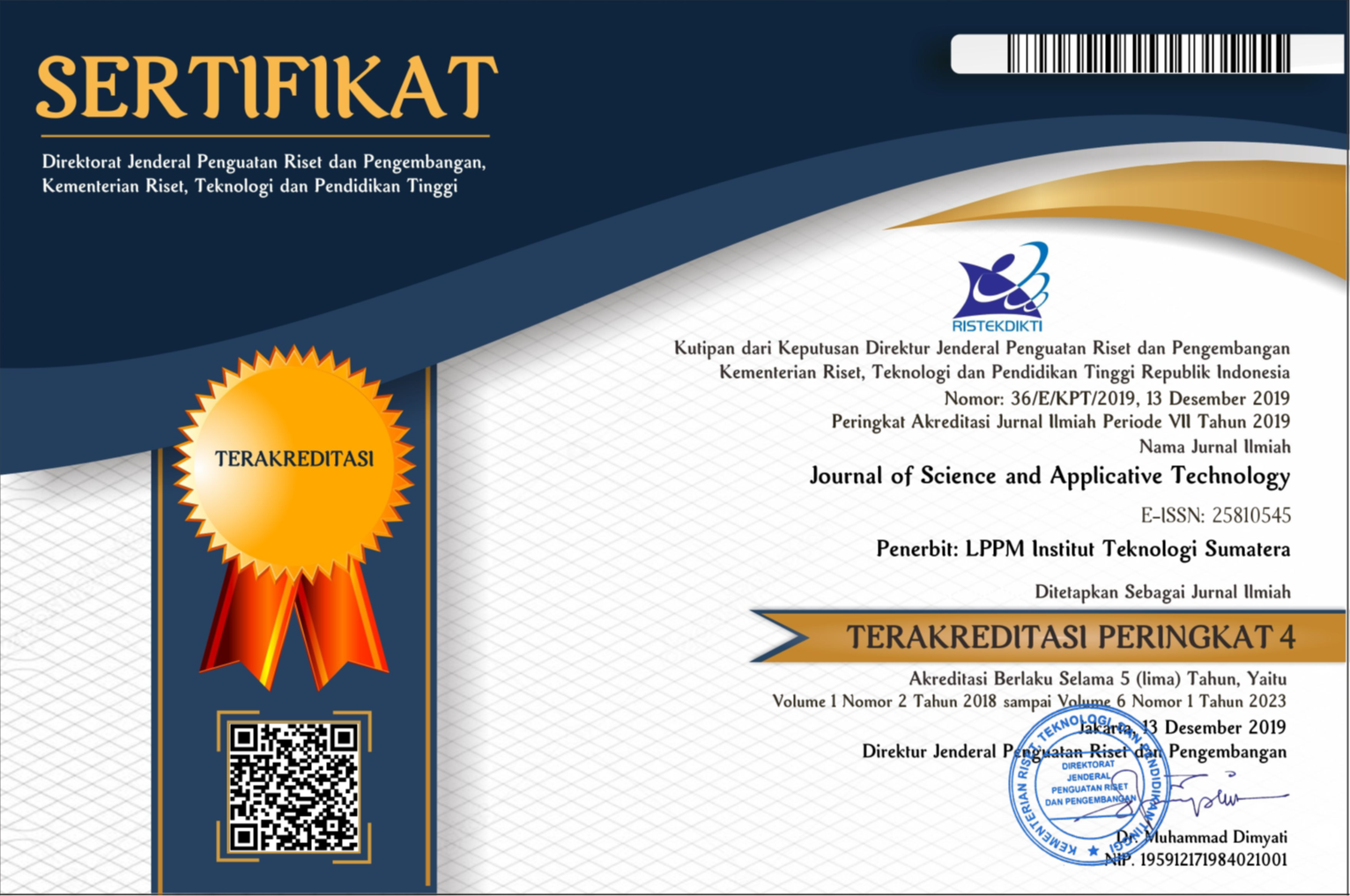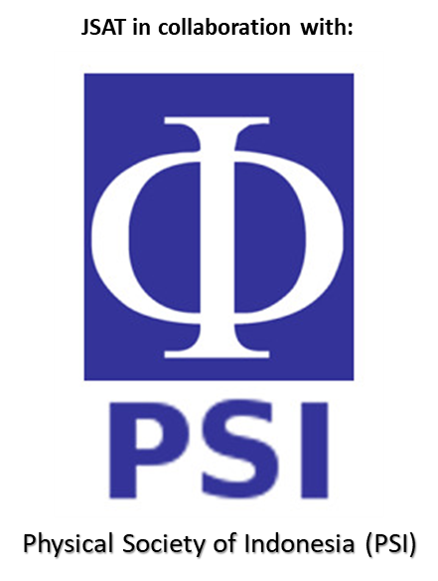Potensi Geodiversity di Sekitar Kawasan Anak Krakatau-Way Kambas, Provinsi Lampung, Sebagai Kandidat Geopark Indonesia
Abstract
The global significance of Krakatau Volcanic Complex and Way Kambas National Park is the best potential areas to be developed as part of a world heritage, particularly as UNESCO Global Geopark. Both of these objects are in the Lampung Province, Indonesia. Soon, it is necessary to identify and make an inventory of key sites that could become the theme of the area. The study of geodiversity and scientific valuation was carried out which referred to the Technical Guidelines for the Assessment of Indonesia Geological Heritage Resources, 2019. Based on these studies and assessments, there are 14 key sites to represent for Geopark Krakatau-Way Kambas themes. These sites are closely related to the evolution of tectonic activity in the Southern Sumatera as well as the dynamics of magmatism and paleovolcanism that have occurred since the Mesozoic which has signification in human history as world heritage.
Downloads
References
[2] J. Brilha, “Inventory and Quantitative Assessment of Geosites and Geodiversity Sites: a Review,†Geoheritage, vol. 8, no. 2, hal. 119–134, 2016.
[3] J. Hjort, J. E. Gordon, M. Gray, dan M. L. Hunter, “Why geodiversity matters in valuing nature’s stage,†Conserv. Biol. J. Soc. Conserv. Biol., vol. 29, no. 3, hal. 630–639, 2015.
[4] M. Gray, “Geodiversity and Geoconservation: What, Why, and How?,†The George Wright Forum, vol. 22, no. 3, hal. 4-12, 2005.
[5] Peraturan Presiden, “Pengembangan Taman Bumi (Gepark)," 2019.
[6] S. Andi Mangga, Amiruddin, T. Suwarti, S. Gafoer, dan Sidarto, “Geologi Lembar Tanjungkarang, Sumatera.†Pusat Penelitian dan Pengembangan Geologi, 1994.
[7] S. A. Mangga, Amiruddin, T. Suwarti, S. Gafoer, dan Sidarto, “Peta geologi lembar Tanjung Karang, Sumatera,†1993.
[8] T. C. Amin, Sidarto, S. Santosa, dan W. Gunawan, “Peta geologi lembar Kotaagung, Sumatera,†1993.
[9] Permana, Haryadi, Muasri, S. Aribowo, dan M.M. mukti, “Petrologi Batuan Dasar Kompleks Gunung Kasih, Tanjungkarang, Lampung Selatan,†Prosiding Geoteknologi Lipi, 2017.
[10] S. Winchester, “Krakatoa: The Day the World Exploded: August 27, 1883,†United Kingdom: Penguin, 2004.
[11] J. H. Latter, “Tsunamis of volcanic origin: Summary of causes, with particular reference to Krakatoa, 1883,†Bull. Volcanol., vol. 44, hal. 467–490, 1981.
[12] N. Schaller, T. Griesser, A. Fischer, A. Stickler, dan S. Brönnimann, “Climate effects of the 1883 Krakatoa eruption: Historical and present perspectives,†Vierteljahrsschr. Naturforschenden Ges. Zuerich, vol. 154, hal. 31–40, 2009.
[13] Pusat Vulkanologi dan Mitigasi Bencana Geologi, "Gunung Krakatau," https://vsi.esdm.go.id/index.php/gunungapi/data-dasar-gunungapi/509-g-krakatau?start=1 (diakases 25 Oktober, 2020).
[14] P. Gleckler, K. Achutarao, J. Gregory, B. Santer, dan T. Wigley, “Krakatoa lives: The effect of volcanic eruptions on ocean heat content and thermal expansion,†Geophys Res Lett, vol. 33, 2006.
[15] W. Pusparini T. Batubara, F. Surahmat, A. T. Sugiharti, M. Muslich, F. Amama, W. Marthy, dan N. Andayani, “A pathway to recovery: The Critically Endangered Sumatran tiger Panthera tigris sumatrae in an ‘in danger’ UNESCO World Heritage Site,†ORYX, vol. 52, no. 1, hal. 25–34, 2018.
[16] R. Sawitri, A. S. Mukhtar, dan N. M. Heriyanto, “Biodiversity and management of estuarine ecosystem in Way Kambas National Park, Lampung (Indonesia),†Bul. Penelit. Hutan Indones., 1998.
[17] W. B. Hamilton, “Tectonic of The Indonesian Region,†1979.
[18] R. McCaffrey, “The Tectonic Framework of the Sumatran Subduction Zone,†Annu. Rev. Earth Planet. Sci., vol. 37, no. 1, hal. 345–366, 2009.
[19] N. R. Cameron, M. C. G. Clarke, D. T. Aldiss, J. A. Aspden, dan A. Djunuddin, “The Geological Evolution of Northern Sumatera,†The 9th Annual Conv. Pros. of American Association of Petroleum Geosc, hal. 149-187, 1980.
[20] J. A. Katili, “Geology of Southeast Asia with particular reference to the South China Sea,†Energy, vol. 6, no. 11, hal. 1075–1091, 1981.
[21] S. Gafoer, “Tinjauan Kembali Tatanan Stratigrafi Pra-Tersier Sumatera Bagian Selatan,†Pros. Persidang. Sains Bumi Dan Masy. Malays. Nas. Univ.
[22] S. Suparka and S. Asikin, “Pemikirkan Perkembangan Tektonik Pra-Tersier di Sumatera Bagian Tengah,†Ris. Geol. Dan Pertamb., vol. 1, hal. 1–13.
[23] Peraturan Menteri Energi dan Sumber Daya Mineral Nomor 1, “Pedoman Penetapan Warisan Geologi (Geoheritage),†Diakses pada 31 September, 2021. Available: https://jdih.esdm.go.id/storage/document/Permen%20ESDM%20Nomor%201%20Tahun%202020.pdf.
[24] Kementerian Energi dan Sumber Daya Mineral, “Petunjuk Teknik Asesmen Sumber Daya Warisan Geologi,†Badan Geologi, 2017.
[25] M. G. Sagara, "Morfologi, Petrografi, dan Kimia Mineral Migmatit Jundeng, Lampung," Bandung: Institut Teknologi Bandung, Skripsi tidak dipublikasikan, 2016.
[26] K. Fowler-Billings, "The Geology of the Monadnock Quadrangle New Hampshire," N.H. Planning and Development Commission, 1949.
[27] P. T. Yatmaja, “Efektivitas Pemberdayaan Masyarakat oleh Kelompok Sadar Wisata (POKDARWIS) dalam Mengembangkan Pariwisata Berkelanjutan,†Adm. J. Ilm. Adm. Publik Dan Pembang., vol. 10, no. 1, hal. 27–36, 2019.
[28] R. E. N. Siregar, A. Zakaria, dan A. Armijon, “Kajian Daerah Rendaman tsunami di Pesisir Teluk Lampung Akibat Perubahan Topografi Gunung Anak Krakatau di Tahun 2018,†J. Geofis. Eksplor., vol. 6, no. 1, hal. 31–41, 2020.
[29] Suharno, R. B. Aritonang, A. Zainudin, dan Rustadi, “Sistem Panas Bumi Cisarua Natar Lampung Selatan,†Pro. The 12th Ann. Indonesia Geothermal Ass. Meet. And Conf., 2012.
[30] W. J. Riskawati, “Persepsi Wisatawan Terhadap Obyek Wisata Taman Purbakala Pugung Raharjo di Desa Pugung Raharjo Kecamatan Sekampung Udik Kabupaten Lampung Timur Tahun 2015,†Lampung: Universitas Lampung, Skripsi tidak dipublikasikan, 2015.
[31] I. Zulkarnain, “Geochemical Evidence of Island-Arc Origin for Sumatra Island; A New Perspective based on Volcanic Rocks in Lampung Province, Indonesia,†Indones. J. Geosci., vol. 6, no. 4, 2011.
[32] K. Kusumadinata, “Data Dasar Gunung Api Indonesia.†Dit. Vulkanologi, Bandung, 1979.
[33] Pusat Sumber Daya Mineral, Batubara, dan Panas Bumi, "Potensi panas bumi Indonesia, Edisi pertama," Jakarta: Direktorat Panas Bumi, Direktorat Jenderal Energi Baru, Terbarukan, Konservasi Energi, Kementerian Energi dan Sumber Daya Mineral, 2017.
[34] A. J. Barber, M. J. Crow, dan J. Milsom, "Sumatra: geology, resources and tectonic evolution," London: The Geological Society, 2005.
Copyright (c) 2021 Journal of Science and Applicative Technology

This work is licensed under a Creative Commons Attribution-NonCommercial 4.0 International License.
All the content on Journal of Science and Applicative Technology (JSAT) may be used under the terms of the Creative Commons Attribution-NonCommercial 4.0 International License.
You are free to:
- Share - copy and redistribute the material in any medium or format
- Adapt - remix, transform, and build upon the material
Under the following terms:
- Attribution - You must give appropriate credit, provide a link to the license, and indicate if changes were made. You may do so in any reasonable manner, but not in any way that suggests the licensor endorses you or your use.
- NonCommercial - You may not use the material for commercial purposes.
- No additional restrictions - You may not apply legal terms or technological measures that legally restrict others from doing anything the license permits.





















